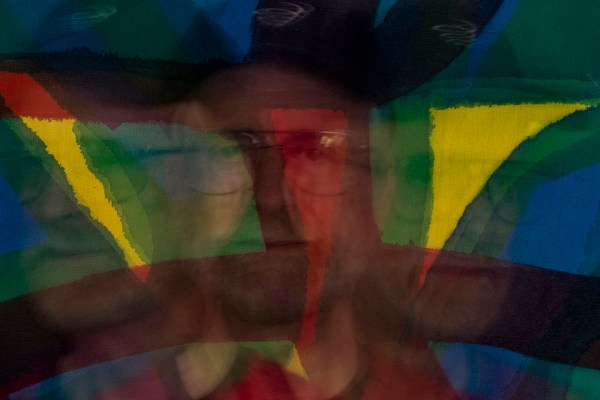Light Matters
Abstract Photographic Art by William Lord

About this Site
Some Inspirations
I have a lifelong love of the humanities: especially music, literature and drama, painting, sculpture, photography, architecture, and history. They all affect who I am. In the visual arts there are so many from whom I take inspiration. In painting, 20th century abstractionists such as Morris Louis, Mark Rothko, and especially, Paul Jenkins come to mind. There are many others. In photography, Wynn Bullock’s abstracts intrigue me, as do the abstracts of my friend and mentor, Aric Attas, which fire my imagination. Weston, White, and Capronigro also inspire.
Though I do not have nearly as much academic background or study in them, I am fascinated by nature and the sciences. The land, water, and atmosphere of the earth and the forces that affect them play an inspirational role in my work, though my abstracts are nearly always created indoors in my home. I am dazzled by the discoveries and theories of astrophysics and I never tire of images such as those from the Hubble Space Telescope. I believe that the immense vastness and enormous numbers of phenomena and objects have analogy within the human mind and spirit. Our potential is great indeed.
Light
I find light ever fascinating. It occupies an intense place in human cultures, no doubt with deep prehistoric origins. It inhabits many parts of the English language to be sure. Light can be the opposite of dark, heavy and serious. We speak of being enlightened; casting light upon; lightening the mood; being lighthearted; light reading; and on and on in many ways both more and less nuanced. Discussion of the symbolism of light in literature, legend, mythology, and religion could fill an untold number of volumes.
Scientific study of light itself only makes it seem more wondrous: its incredible speed, its particle or wave behavior, its spectra, and its effects i.e. sunlight’s ability to support life with photosynthesis yet burn flesh and cause cancer here on Earth. We measure the nearly unfathomable distances in the universe in light years.
Of course the visual arts hinge on some understanding of the uses and exploitation of light in varied ways. In sculpture, think of how light plays upon Michelangelo’s Pieta and compare that with Brancusi’s Bird in Flight. Painters, of course, have always been preoccupied with discovering and revealing “great” light. Compare the complex lighting of Rembrandt’s The Night Watch to the experience of standing before one of Rothko’s large, undulating canvases. Photography even has light in its name and photographers are just as obsessed with it as any other artists. I am deeply curious about light and work to discover more about it in my photography. In my abstract pictures, light itself is the object.
Abstract Art
Abstract art poses special challenges for the viewer. Instinctively our minds search for the familiar as they process what they are seeing. For example, many of us have had the experience of “seeing” familiar shapes when looking at clouds in the sky. This is both the mind trying to find the familiar and an exercise in imagination, one of the great human attributes. When Einstein suggested imagination to be more powerful than knowledge, I don’t believe that he was discounting knowledge, but stressing the importance of using it creatively. Abstract art demands using the imagination more deeply than finding faces, animals, or ships in clouds. It requires discovery, beyond narrative which may or may not be there, of states of mind or states of being that are not necessarily easily put into words.
“My cloud photographs are equivalents of my most profound life experiences, my basic philosophy of life. All art is an equivalent of the artist’s most profound life experiences.” Alfred Stieglitz
“Abstraction allows man to see with his mind what he cannot physically see with his eyes…Abstract art enables the artist to perceive beyond the tangible, to extract the infinite out of the finite. It is the emancipation of the mind. It is an explosion into unknown areas.” Arshile Gorky
“Abstract art does not employ subject matter that is obvious as either the anecdote or familiar objects, yet it must appeal to our experience in some way. Instead of appealing to our sense of the familiar, it simply functions in another category.” Mark Rothko
Works of art often have layers of experience and meaning. Thoughtful consumers of art notice the surface layers, but then probe more deeply. When people revisit a book, painting, play, piece of music, motion picture or other work, they often discover more than they did with their first experience with it. They may find additional nuances or even depths that were not so apparent the first time. I feel a kinship with Stieglitz’s equivalents concept. The images represent more than themselves. Rather than being created to match the decor of a certain room, they are metaphors that do not always have direct verbal analogies.
Richard Frank was one of my art teachers. He was a fine painter who’s range of work included large color field abstracts and photo realistic images. He once told me that a good painting had some sense of mystery to it. That appealed to me. I would amend or extend that by using the word wonder and apply it to visual art in general. As to my work, my first criterion for keeping an image is that has sparked some sense of wonder in me. I want my pictures to engage the imagination. When people tell me that they see vistas of space and other worlds in a picture of mine, I am pleased that they are using their imaginations. I do hope that they will dig deeper. These explorations of light are about human meaning. What can the image represent about us, individually and collectively? I hope that you find some of them interesting.
William Lord
